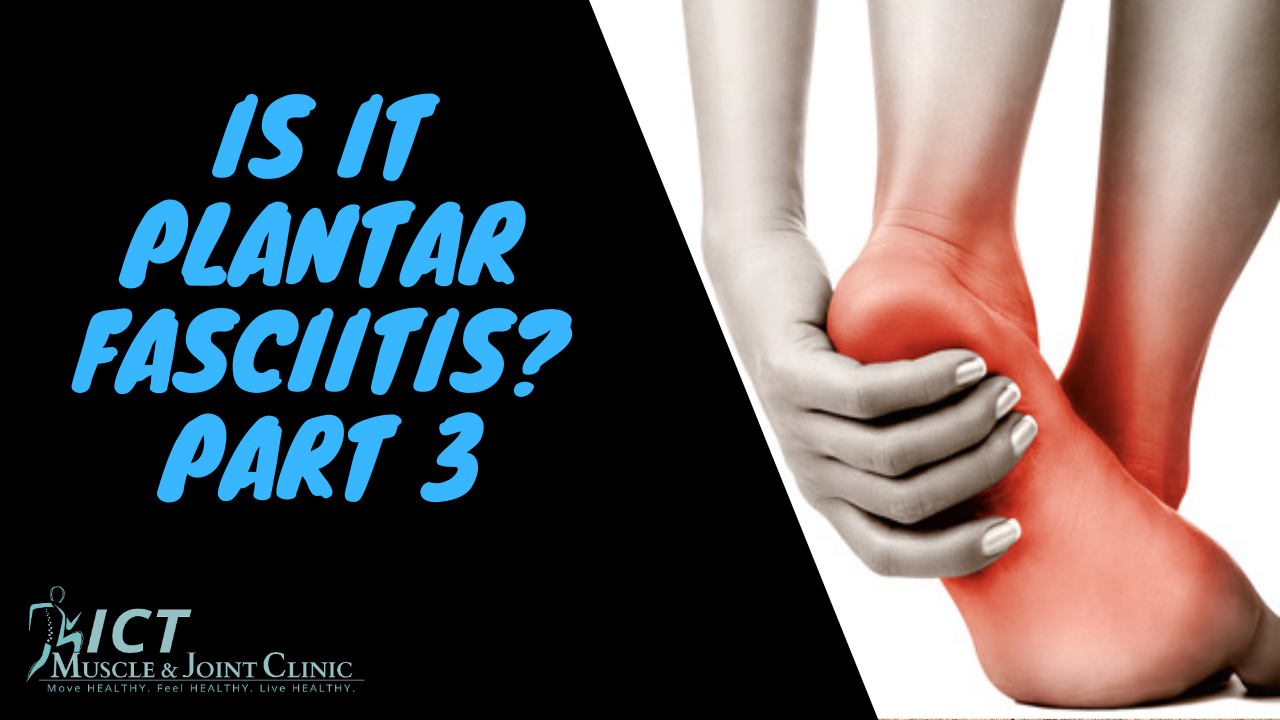Treatment and Rehab at the Ankle for Plantar Fasciitis
The Ankle and Plantar Fasciitis
Limited Ankle Dorsiflexion (foot going toward shin) is shown to be a low to moderate risk for developing plantar fasciitis. Why? Our body is incredibly smart and even when it is lacking joint range of motion in the ankle it will still accomplish the task at hand like running, squatting, lunging by compensating and increasing strain up and down the chain. This commonly means increased demand and force placed upon the plantar fascia over time.
-
The Plantar Fasciitis Assessment Process
- We first need to assess WHERE the restriction is coming from. Through some simple tests and hands on assessment, we can determine if it is a joint mobility dysfunction, tissue extensibility dysfunction, or more of a stability and motor control issue (body allowing you to control and actively use the range of motion you already passively have).
- For Joint Mobility Dysfunction we will be looking at restrictions of the ankle mortise joint (junction between the tibia and fibula meeting the talus of the foot) specifically going into dorsiflexion (pulling the foot upwards towards the leg). Think of the joint as the control center. If we do not have great access neurologically and full use at the control center, then the tissues that are connected and working off the control center are not going to be working as optimally. Strengthen and gain more control of the joint, and issues in the muscles, tendons, and ligaments that connect become a lot better.
- For Tissue Extensibility, the main two muscles we will be looking at are the gastrocnemius and soleus muscles that are on the backside of the leg and commonly referred to as the calf muscles. The gastrocnemius crosses two joints and is put on stretch when you have your knee straight. The soleus is put on stretch with your knee bent.
- For stability and motor control issue, we are looking to open up and control the range of motion we already have but the brain and body is not allowing us to actively use it in activities we need it. We see this issue more often than you might think. People are stretching and foam rolling their calves day after day with temporary relief, but they do not actually have a mobility or flexibility problem. They have a stability problem. Once they attack the real cause, the issues go away.
- We first need to assess WHERE the restriction is coming from. Through some simple tests and hands on assessment, we can determine if it is a joint mobility dysfunction, tissue extensibility dysfunction, or more of a stability and motor control issue (body allowing you to control and actively use the range of motion you already passively have).
-
Plantar Fasciitis Treatment
- As you can see treatment will differ depending on which bucket you fall in, but no matter the bucket you fall in treatment will always be more on the active side. We can do adjustments, IASTM, dry needling, cupping, Voodo Floss, or active release to assist along the way, but if we never actually load the tissues and increase capacity then things tend to be reoccurring. Even when out of pain we must work until your capacity is increased above your current loads. If you are constantly just working near your capacity, then you are just asking for more injuries.
Ultimately, there is a reason the calf is getting tight and holding trigger points in the first place. This normally comes down to either weakness, compensating for issues going up or down the chain, or overuse due to ramp up in volume of training too quickly. But as an overarching principle, you can never go wrong getting strong. Runners in our opinion should be doing some type of calf raise and progressing it over time to keep them strong. Especially if you notice tightness that only gets temporary relief with stretching and foam rolling.
Reminders: As you can already tell from the first three parts, a lot can play into plantar fasciitis. It can be a frustrating injury, as research has shown that it can in some instances take 6-12 months to fully resolve. This means patience is key but does not mean it cannot heal sooner, as we commonly see that if the actual issue and load management is attacked appropriately it goes much more quickly. Stick to a personalized treatment plan and progressions and you will reap the benefits long term.
References: Cook, Gray. Movement: Functional Movement Systems: Screening, Assessment and Corrective Strategies. On Target Publications, 2017.
About the author
When it comes to mechanical pain, Dr. Tyler Panko has seen the best outcomes produced when chiropractic, physical therapy, strength and conditioning, and soft tissue techniques and principles are combined into an individualized plan for the patient. His purpose and passion are to educate and help all people, ranging from acute to chronic pain, professional athlete to daily worker, and young child to elderly, go from pain to increased performance in their daily lives doing the things they love. His belief is that life is an athletic event, and everybody has the right to move and feel great well into old age.
